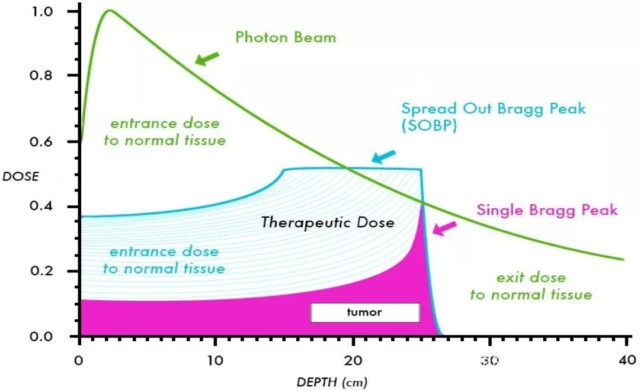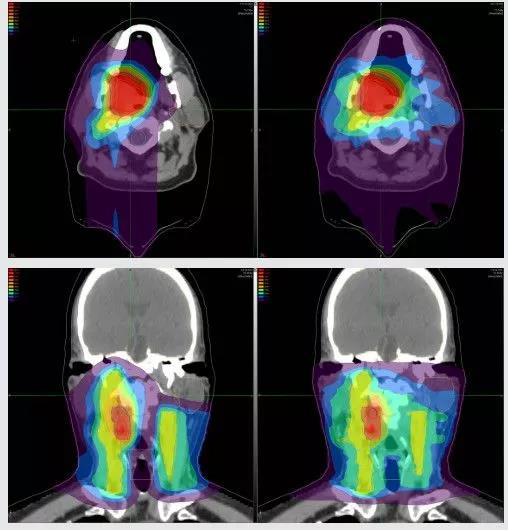Proton therapy is the first choice for Head and neck tumors?
- A Single US$2.15-Million Injection to Block 90% of Cancer Cell Formation
- WIV: Prevention of New Disease X and Investigation of the Origin of COVID-19
- Why Botulinum Toxin Reigns as One of the Deadliest Poisons?
- FDA Approves Pfizer’s One-Time Gene Therapy for Hemophilia B: $3.5 Million per Dose
- Aspirin: Study Finds Greater Benefits for These Colorectal Cancer Patients
- Cancer Can Occur Without Genetic Mutations?
Proton therapy is the first choice for Head and neck tumors?
- Red Yeast Rice Scare Grips Japan: Over 114 Hospitalized and 5 Deaths
- Long COVID Brain Fog: Blood-Brain Barrier Damage and Persistent Inflammation
- FDA has mandated a top-level black box warning for all marketed CAR-T therapies
- Can people with high blood pressure eat peanuts?
- What is the difference between dopamine and dobutamine?
- How long can the patient live after heart stent surgery?
Proton therapy is the first choice for Head and neck tumors?
People usually divide tumors into many types according to their anatomical locations, such as lung cancer and liver cancer. Tumors at different locations have many pathological and molecular subtypes, so it can be said to be quite complicated. However, there is one type of cancer that has a very special name, and we collectively refer to it as head and neck tumors.
You may be relatively unfamiliar with this type of cancer. If you perform a “division analysis”, you will see some familiar words-laryngeal cancer, thyroid cancer, oral cancer, nasopharyngeal cancer, paranasal sinus cancer, hypopharyngeal cancer, etc.
Head and neck tumors are more complicated, radiotherapy is the first choice
Malignant tumors of the head and neck account for about 30% of all malignant tumors in the whole body. The incidence rate among Chinese men is 6th, and the mortality rate is 7th. The most common pathological type is squamous cell carcinoma. In addition to nasopharyngeal carcinoma, which is mainly caused by the Epstein-Barr virus, tobacco and alcohol are the main causes of other head and neck squamous cell carcinomas.
The incidence of head and neck tumors was larynx (32.1%), thyroid (19.6%), oral cavity (16.1%), nasopharyngeal (14.9%), paranasal sinuses (6.6%), salivary glands (4.2%), oropharynx (3.3%), eyes (1.52%), swallowing (1.5%). Its patients are mainly males older than 50 years old. It is worth noting that the incidence of females has been increasing significantly in the past 10 years.
Because many important organs are concentrated in the head and neck, which control important physiological functions, such as vision, hearing, smell, thinking, breathing, sound, and eating, there are more muscles, bones, blood vessels and more concentrated in a relatively small space. Nerves and various organs are interlaced. Once a tumor is found, it is difficult to achieve radical resection. Therefore, radiotherapy has become a very important means of comprehensive treatment of head and neck tumors.
In the treatment of malignant tumors of the head and neck, about 80% of patients will receive radiotherapy. With the continuous renewal of radiotherapy equipment, the continuous improvement of radiological technology, and the organic combination of radiation with various treatment methods such as surgery, chemotherapy, and biological therapy, the effect of radiotherapy for head and neck tumors has been significantly improved in recent years.
NCCN Head and Neck Cancer Treatment Guidelines Include New Therapy-Proton Therapy
The NCCN Clinical Practice Guidelines for Head and Neck Cancer (2021.V1) was updated and released on November 9, 2020. The latest version of the guidelines regards proton therapy as one of the standard treatments for head and neck cancer.
 The guidelines point out that proton therapy can be selected based on clinical staging, tumor location, doctor’s experience, and nursing support for head and neck cancer.
The guidelines point out that proton therapy can be selected based on clinical staging, tumor location, doctor’s experience, and nursing support for head and neck cancer.
The NCCN guidelines cover 97% of common tumors in the United States, and will be continuously updated based on the latest data and clinical information, which is absolutely authoritative!
Authoritative research shows that proton therapy vs. standard radiotherapy reduces radiation damage by 60%!
Proton therapy is an improvement and enhancement of standard radiotherapy. The use of proton beams to replace the photon beams used in standard radiotherapy, combined with the current advanced three-dimensional, conformal, and intensity modulation technologies, can effectively improve the curative effect of radiotherapy. It is precisely because of this that proton therapy is hailed by the Japanese medical community as “the highest technology and future trend of radiotherapy”. It represents the development direction of radiotherapy with higher precision and fewer side effects, and is one of the hottest researches at present.
According to the research data of the American Society of Clinical Oncology (ASCO), proton therapy can reduce the radiation dose received by the surrounding tissues of the target site by 60% and fully apply these doses to the lesion site.
The energy carried by the X-ray (photon beam) is 4-18 MeV, and the energy carried by the proton beam can reach 70-230 MeV. When using proton therapy, doctors can more easily determine when and where to release energy, better focus the radiation dose on the lesion tissue, and avoid harm to surrounding healthy tissue.
In standard radiotherapy, the X-ray beam deposits energy along its path before hitting the target lesion, that is, when passing through the human body; after hitting the target lesion, there will still be a large amount of radiation dose remaining, and it will continue to be released along the beam path, causing damage For healthy tissues, this is called the “withdrawal dose.”
The proton is relatively heavy and will stop when it hits the target and will not produce an “exit dose.”
 The figure shows the dose change of photon therapy (green) and proton therapy (blue) during irradiation. The vertical axis is the radiation dose, and the horizontal axis is the distance into the human body.
The figure shows the dose change of photon therapy (green) and proton therapy (blue) during irradiation. The vertical axis is the radiation dose, and the horizontal axis is the distance into the human body.
We can clearly see that when X-rays (photon beams) enter the human body and within a short distance after entering the human body, they will reach a very high radiation dose, and then gradually decrease. Until the irradiation to the lesion site, the dose intensity is only about 50% of the highest peak. And after passing through the lesion, it will still maintain a certain dose and slowly decay.
After the proton beam enters the human body, the dose remains basically stable until it rises and reaches a peak when irradiated to the lesion site, releasing the maximum energy; and after passing through the lesion site, it rapidly decreases and decays to 0 within a short distance. The normal tissue behind the lesion causes little radiation.
In general, while maintaining the same radiation dose at the lesion site, the proton therapy regimen causes lower radiation dose to normal tissues other than the lesion than the photon regimen. And the biggest feature of the proton therapy program is that the dose of the proton beam is rapidly reduced to zero after hitting the lesion area; the photon beam will always pass through the human body, and the dose will slowly attenuate until it penetrates the human body.
Proton therapy for head and neck cancer has less side effects
During the treatment of head and neck cancer, proton therapy can effectively reduce radiation exposure to important tissues around the tumor, such as eyes, mouth, salivary glands and brain tissue.
In addition, compared with traditional radiotherapy, patients after proton therapy are less likely to have side effects such as oral ulcers, nausea, salivary gland damage, and weight loss, and the use of feeding tubes is also reduced.
In the process of esophageal cancer treatment, it is difficult to protect important organs around the esophagus during radiotherapy, such as the heart, lungs and spine. Proton therapy can effectively protect these organs.
Proton therapy effectively protects healthy organs
Proton therapy is more precise than traditional X-ray radiotherapy, which means that more energy can be used to destroy tumors and less radiation is delivered to surrounding healthy tissues. Therefore, proton therapy is particularly suitable for the treatment of tumors adjacent to healthy organs, especially head and neck cancer.
When treating head and neck cancer, it is important to protect the fragile organs surrounding the tumor. Proton therapy has great potential to reduce damage to the eyes, optic nerve, salivary glands and other organs near head and neck tumors, thereby reducing the occurrence of side effects such as blindness, worsening hearing and dry mouth. However, secondary malignancies are also unlikely to be suitable for proton therapy.

The image on the left shows the proton beam treatment plan for head and neck cancer; the image on the right shows the traditional X-ray treatment
Head and neck cancer suitable for proton therapy:
- Skull base tumors (including but not limited to anterior, middle and posterior fossa, sphenoid and temporal bone related tumors)
- Nasal cancer (nasal sinuses and nasal cavity)
- Cancer located near the eye socket/eye
- Nasopharyngeal carcinoma
- Small/early oropharyngeal cancer (tonsils, base of tongue)
- Salivary gland tumors (parotid, submandibular and minor salivary glands in the upper gastrointestinal tract)
- Complex skin cancer involving cranial nerves and/or lymph nodes in the neck (unilateral primary)
- Choose patients who have received previous radiation
- Unknown primary cancer (after thorough surgical operation)
Proton therapy is the first choice for Head and neck tumors?
(source:internet, reference only)
Disclaimer of medicaltrend.org
Important Note: The information provided is for informational purposes only and should not be considered as medical advice.



